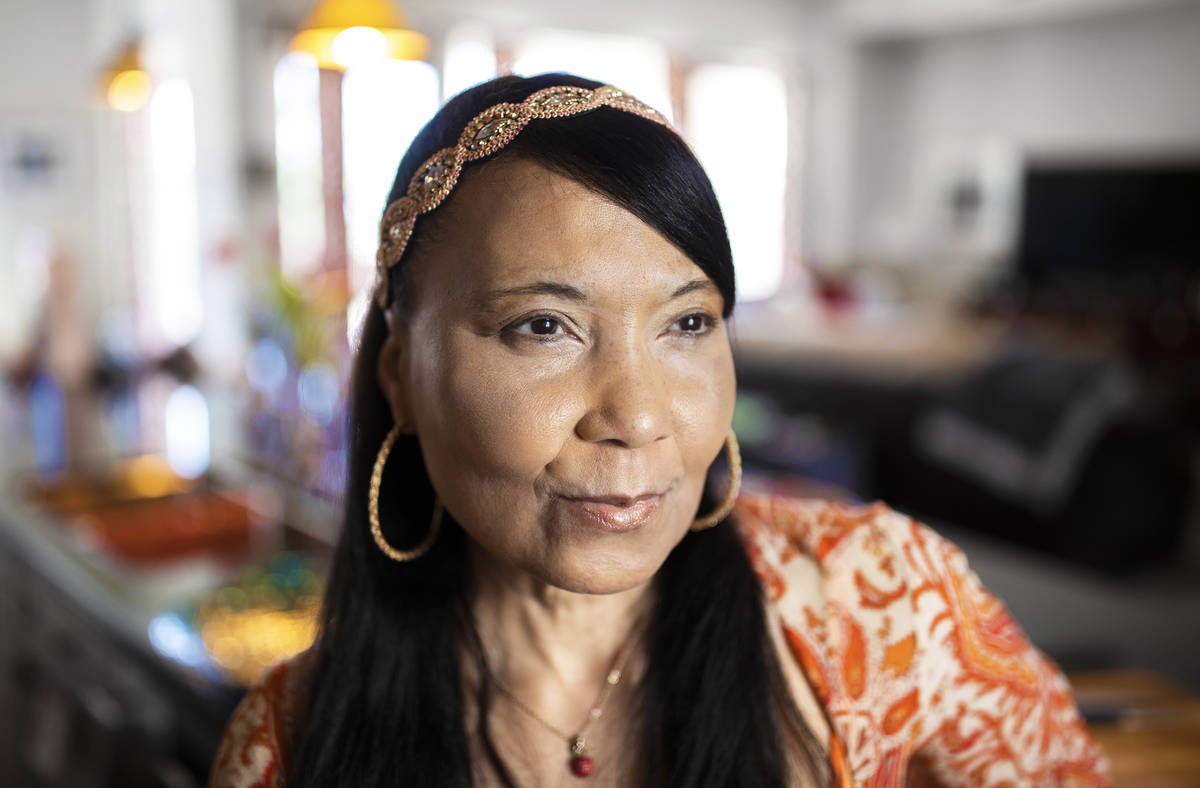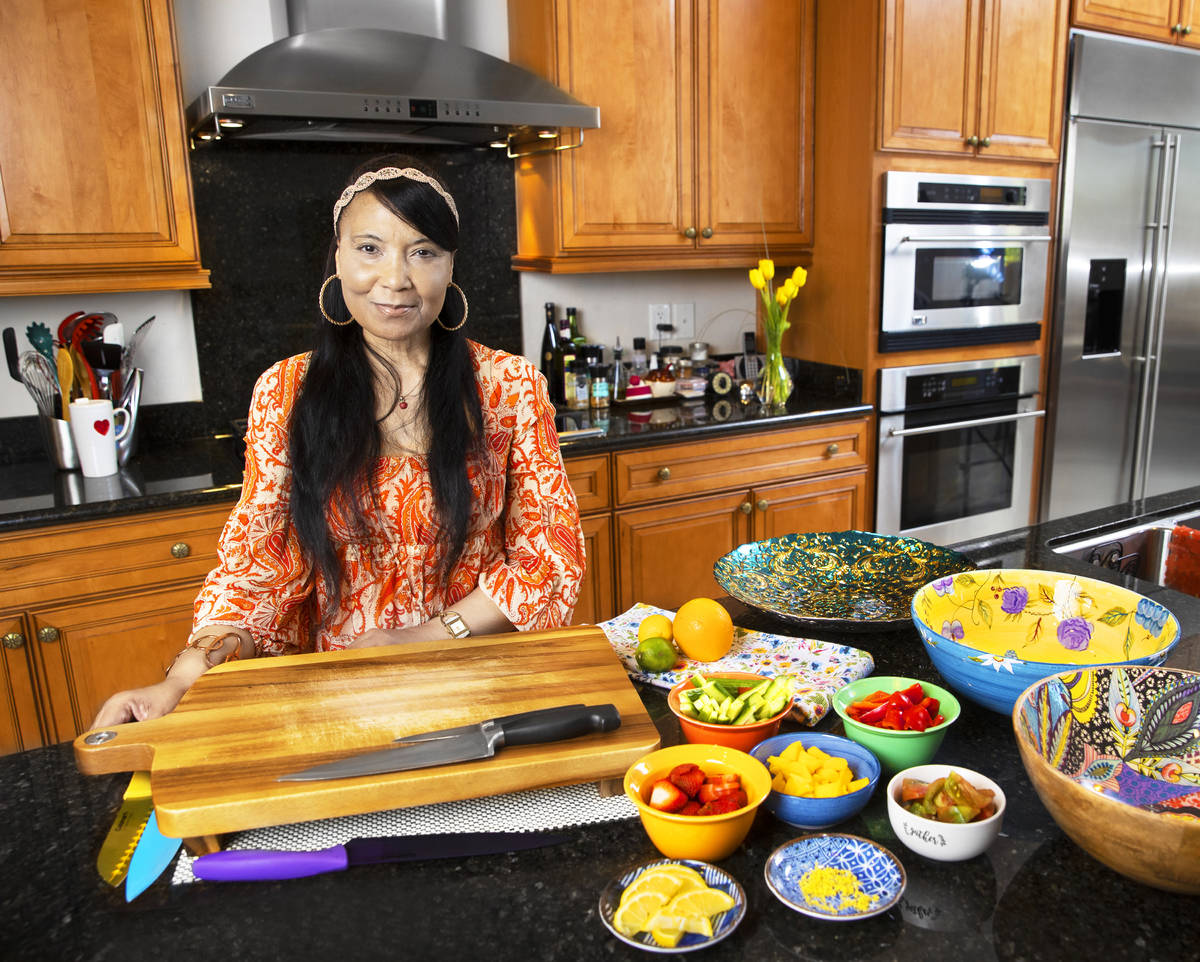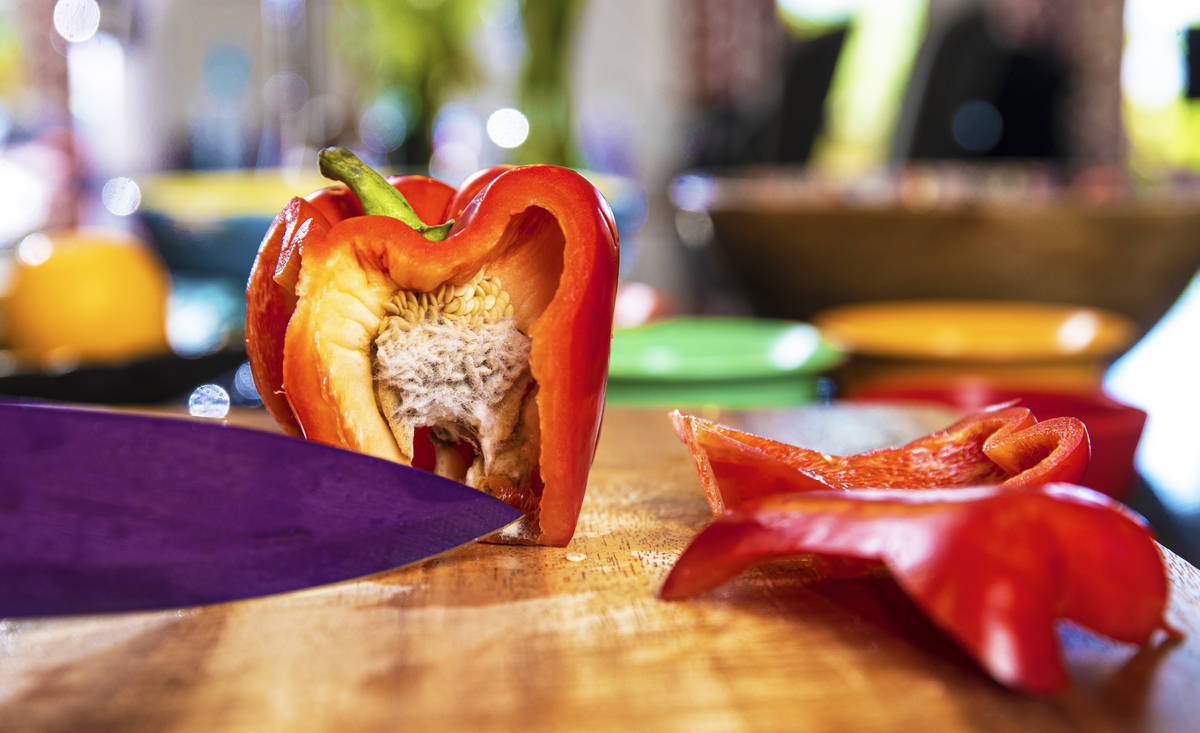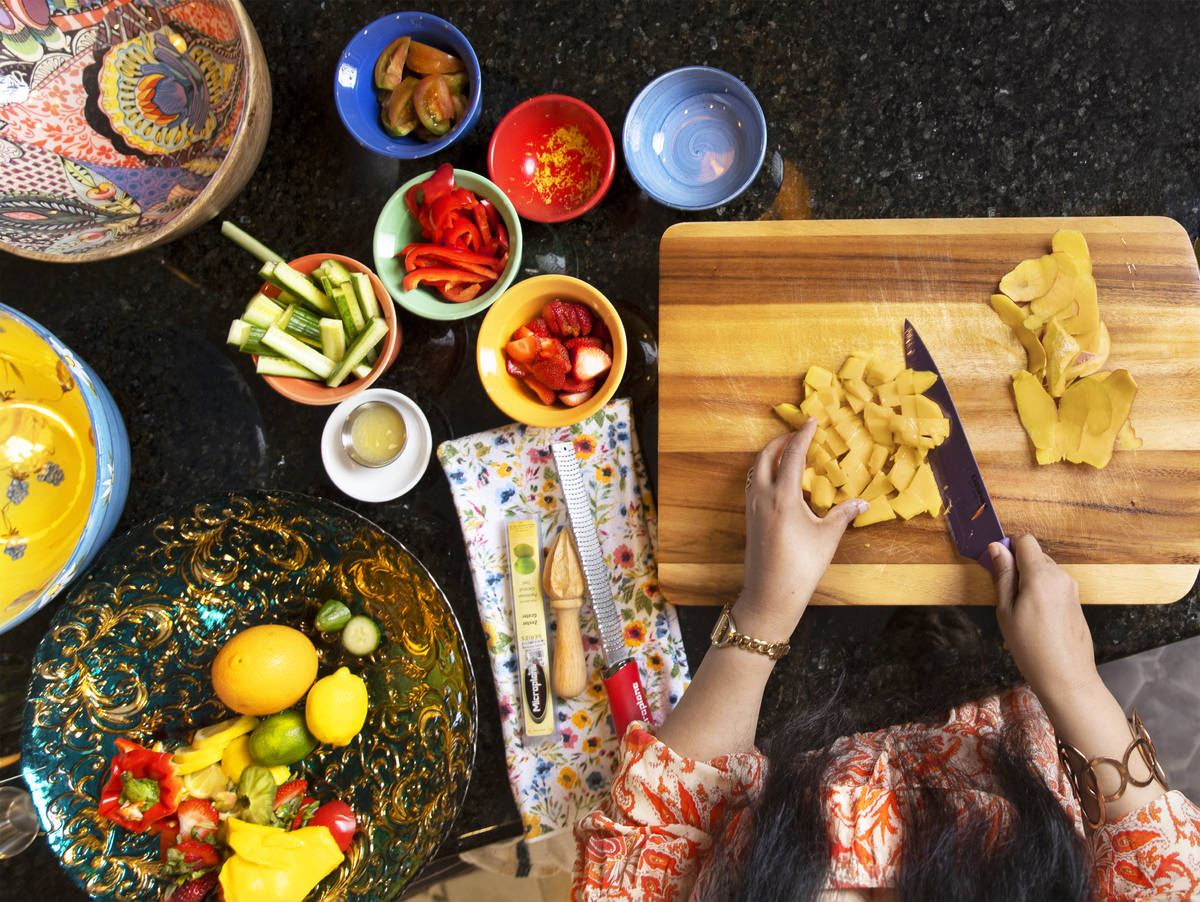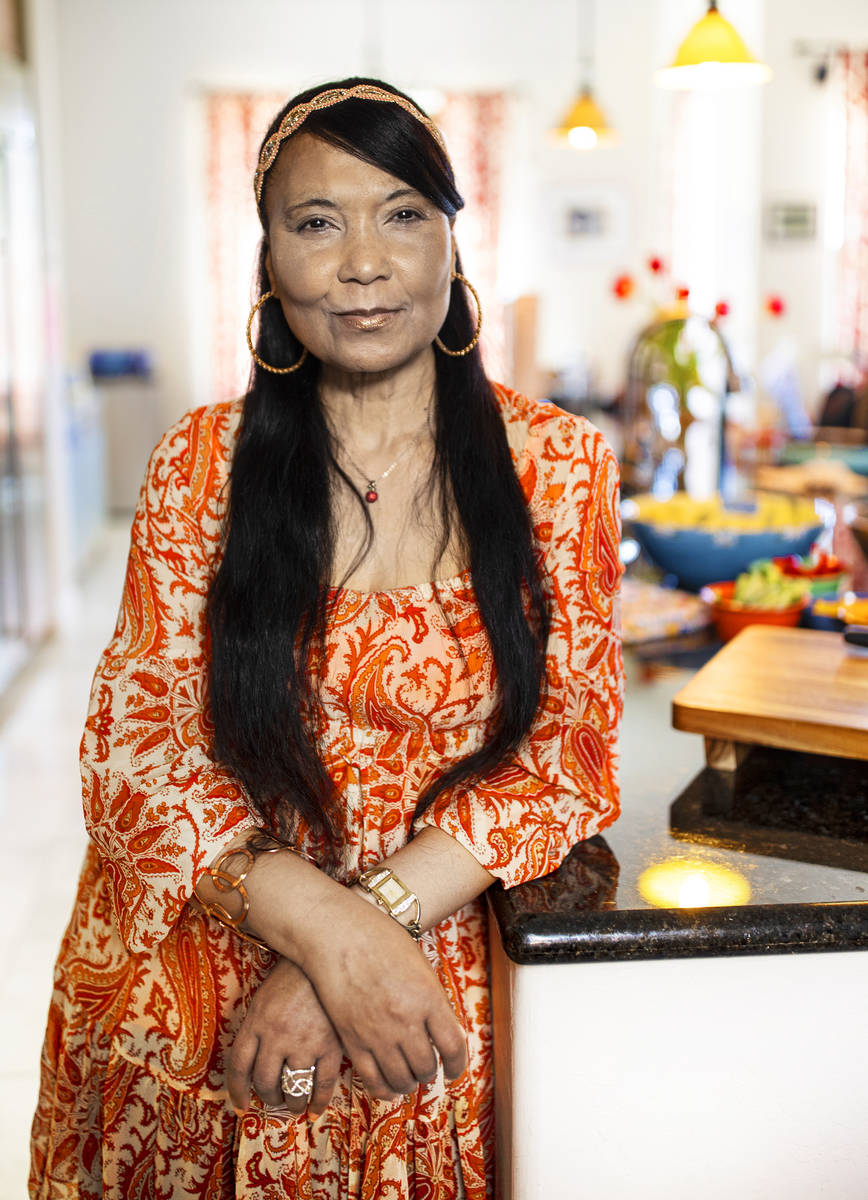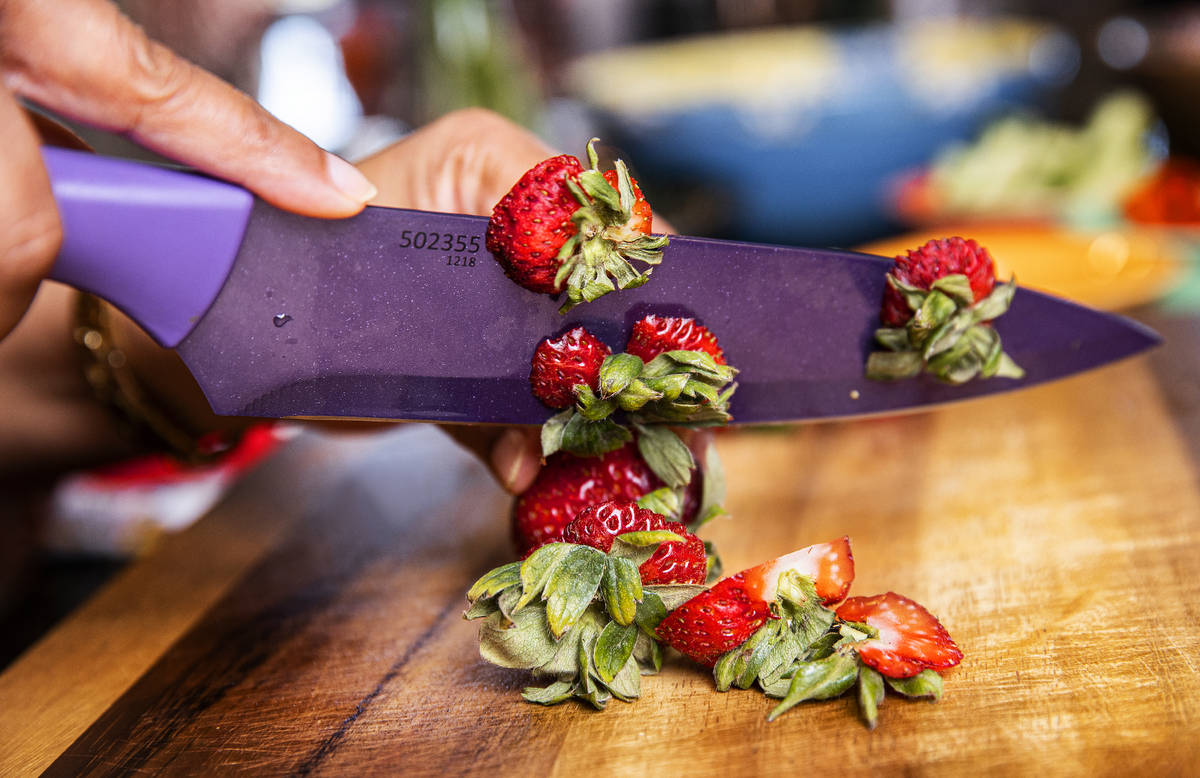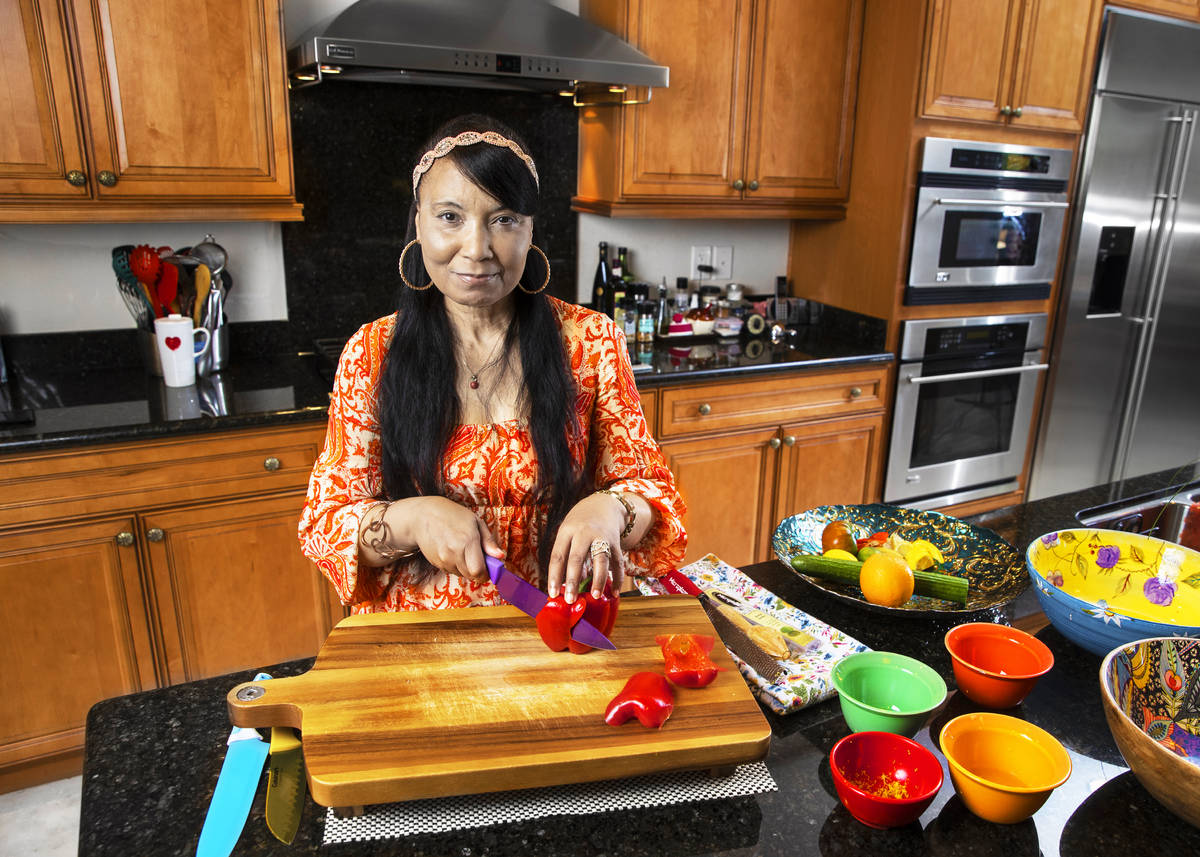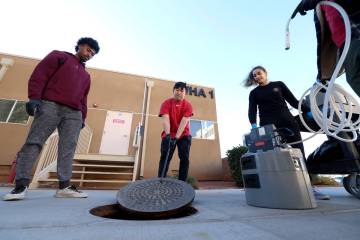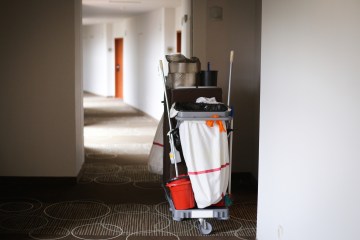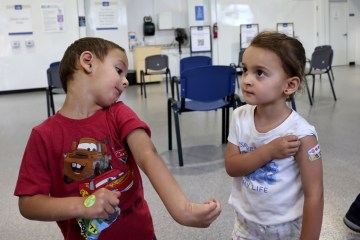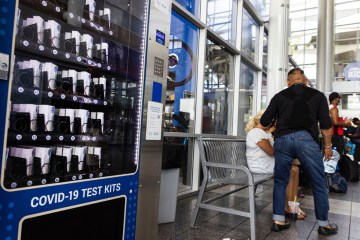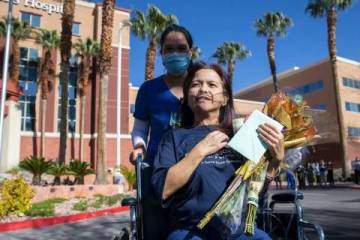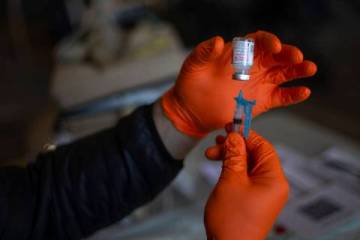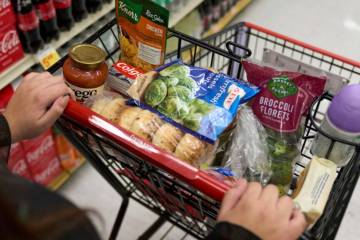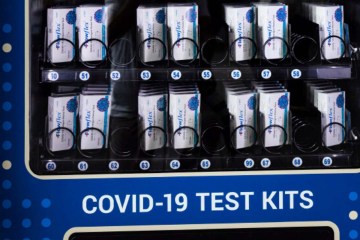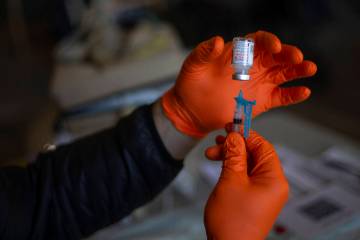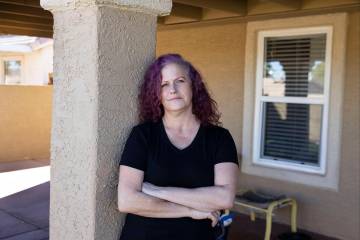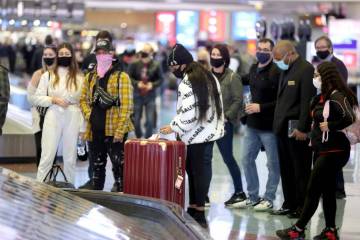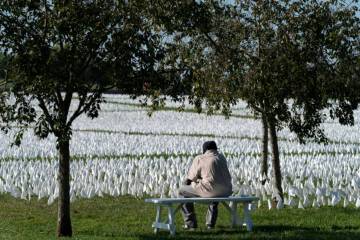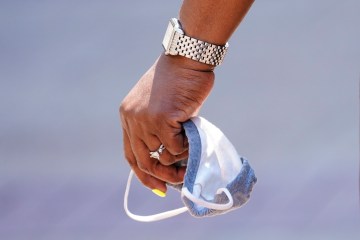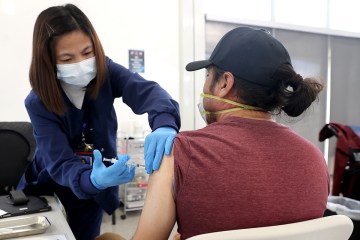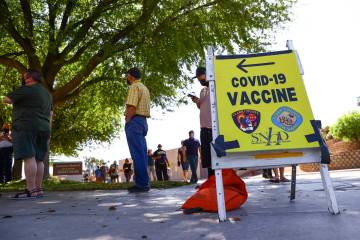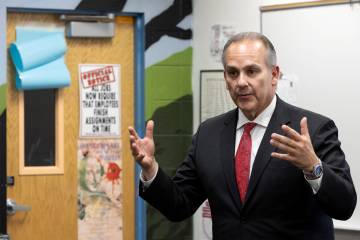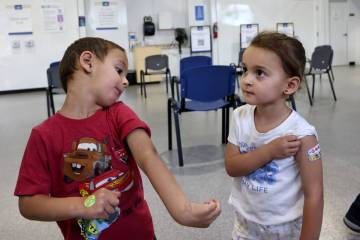How Las Vegas nonprofit for the blind kept cooking during COVID
When the COVID-19 pandemic forced Nevadans to shelter in place for an extended period of time, Raquel O’Neill knew she had to get creative to continue to serve the blind and visually impaired clientele of Blindconnect.
O’Neill, the executive director of the Las Vegas nonprofit, recalls suddenly fielding a multitude of calls asking for advice and resources. Blindconnect’s usual programming at Angela’s House had to be shuttered, and people wanted to know how they could stay involved with the charity.
“It was like, ‘We have to figure out a way,’ ” she said. “Blind people, their family members, they were like, ‘We will do whatever it takes. We have time. We have nothing else to do. So, let’s learn this together, and let’s figure it out.’ ”
And so the charity pushed forward with programs that had never seemed possible before, including cooking and creative writing classes, a support group and even Braille classes, all adapted for online using the Zoom videoconferencing service.
Cooking with cameras
In 2011, Regina Mitchell learned that she was losing her eyesight.
A graduate of Seattle Culinary Institute, Mitchell knew she wanted to keep working as a chef. She quickly outfitted her kitchen and organized her pantry so she’d always know where everything was, even as her eyesight deteriorated.
She’d met O’Neill at UNLV and she started working with others who were losing their sight through Blindconnect. After the COVID pandemic shut things down, she pitched a virtual cooking class for the blind and visually challenged. O’Neill thought it was a great idea.
“It has been such an amazing journey,” Mitchell said. “I can’t believe how you can have an idea, right, and then put some shoes on it and it just runs. You take it to the track, and it just kicks off. And I’m just loving every moment of it.”
Mitchell holds a twice-monthly virtual class, which now includes about 20 students, including some from around the country. And it’s different than your normal cooking class.
Knowing the audience she’s teaching, Mitchell focuses on using extremely descriptive language. Typical cooking class verbiage like “until the juices run dry,” won’t work, so she makes extra effort to describe everything she’s doing.
She also places a second camera next to the stove so people on the Zoom call can hear whatever’s cooking. She also has special equipment for the blind and visually impaired, like a double sided cooking board with a light and dark side and special cut resistant gloves.
She routinely drops in extra tips for people, like using a pizza cutter to cut peppers and onions in an effort to reduce the chance of accidental cuts.
Mitchell has big plans for the future, too. She wants to write a cookbook for blind and low-sighted people, with Braille, audio and large text formats. She hasn’t seen another cookbook like that out there and wants to fill that void.
“Although I can have some vision, and the next person can have low vision, what about the next person that can’t see anything?” she said. “I need to sell this onion and myself so that that person can have confidence when they turn this off, they’ll be able to say, you know what, I think I can do that.”
Learning Braille remotely
It’s hard to even imagine teaching the Braille over Zoom, but that’s exactly what Jean Peyton and Buddy Collier decided to do to replace Blindconnect’s in-person instruction.
“I think for me, it’s just being patient,” Peyton said. “The other thing is I just really want people who want to learn Braille to learn Braille. So, I’m really committed to that process. It’s not as easy as I thought it was going to be.”
The classes to teach people to “read” patterns of raised dots with their fingertips often move at a slow pace because students are often different levels of comprehension. Class members take turns reciting passages from their own copies of the McDuffy Reader, a Braile primer for adults, as other students follow along.
It’s helpful when there are more people in the class, because there are more opportunities to help each other out. Peyton and Collier recommend that if possible, students have a sighted person follow along with a non-Braille version of what they’re reading. That way, they can help correct their mistakes and make sure they’re on the right track.
Collier, who started losing his sight a few years ago, learned Braille before the pandemic, and he knows how difficult it can be. That’s even before adding in the challenges of trying to teach a system that relies on touch and feel without being able to help guide their actions.
“I’m a pencil and paper person, and I have been my entire life,” he said. “And I could not imagine a life without that. So, obviously, I learned Braille. I learned everything I could about it, and the one thing I kept running into is learning Braille is hard and it takes a long time. So, I thought, you’ve got no time to waste, let’s go.”
Though everyone is excited to get back to in-person events and training, they’ve learned a lot from the pandemic and are excited about the future.
“COVID has really taught us, ‘Well, why not?’ ” O’Neill said. “I was really blown away how blind people really rose to the occasion.”
Contact Jonah Dylan at jdylan @reviewjournal.com. Follow @TheJonahDylan on Twitter.



